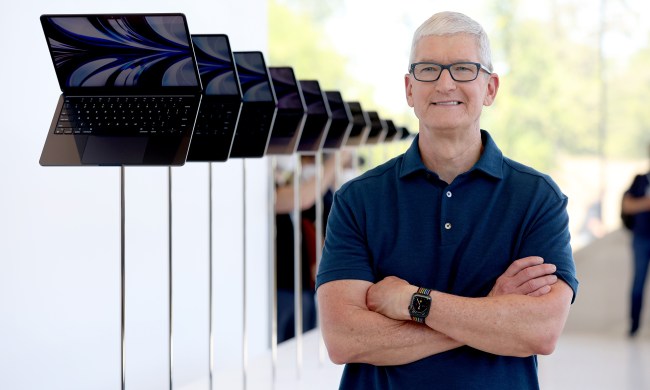
At its annual World Wide Developer Conference (WWDC) today, Apple Computer finally transitioned its computer product line away from PowerPC processors to Intel-based systems, introducing the new high-end Mac Pro Xeon-based desktop systems along with revamped Xserve one-unit servers.
Apple’s new Mac Pro line of desktop towers looks very much like the high-end PowerPC G5 quad systems they replace, but the insides are a whole new beast, sporting two of Intel’s new dual-core Xeon 5100 processors at speeds up to 3.0 GHz, each with 4 MB of L2 cache: according to Apple, the new Intel-based Mac Pros deliver 1.6 to 2.1 times the real-world performance of the fastest PowerPC G5 systems Apple shipped. And the Mac Pros offer substantial expansion and customization options, with two optical drive bays, room for up to 2 TB of storage on four internal hard drives (all with tool-free drive carrier installation) and support for up to 16 GB of RAM. The Mac Pros also sport four PCI Express slots, with a double-wide slot at the bottom to accommodate large graphics cards. Apple says numerous build-to-order options will be available—including ATI Radeon X1900 and FX4500 graphics cards, up to 16 GB of RAM, Bluetooth and AirPort wireless connectivity, and more. Apple’s base configuration for the Mac Pro will be offered for $2,499, featuring dual 2.66 GHz Xeon processors, 1 GB of RAM, ATI GeForce 7300 GT graphics, and a 16× SuperDrive—Apple claims a comparable system from Dell would cost $1,000 more but we’re sure folks will contest that claim. The new Mac Pros are available immediately.
Apple also revamped its line of Xserve rack-mount servers, converting from PowerPC chips to Intel Xeons, keeping the 1U form factor, and adding a redundant power supply (yay!) and support for up to 5 TB of storage. The new Xserve base configurations start at $2,999 ($300 cheaper than a comparable Dell, if you believe that sort of thing). The new Xserve systems will be available in October.


